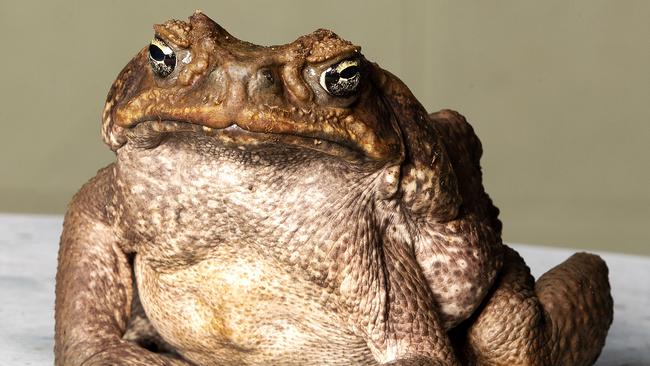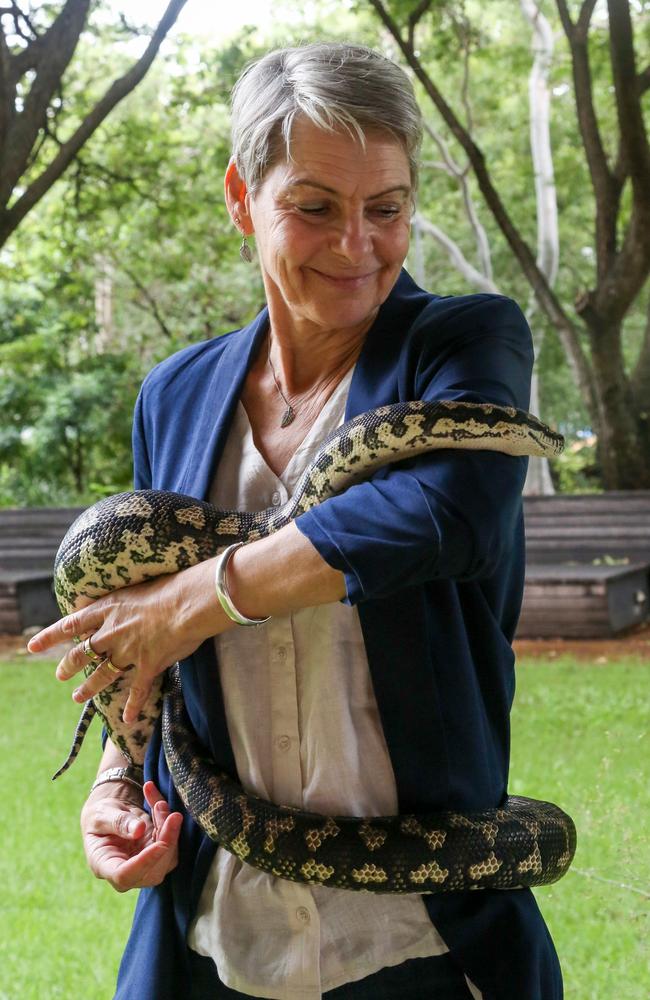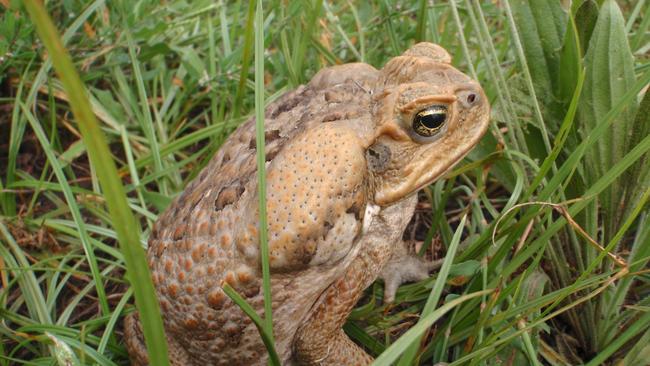Expert says cane toad populations in North Queensland unlikely to be in decline
Cane toad populations could be dropping in North and Far North Queensland, but a North Queensland expert says there is a more likely reason why people don’t see them anymore.
Townsville
Don't miss out on the headlines from Townsville. Followed categories will be added to My News.
Cane toad populations could be dropping in North and Far North Queensland, but it is more likely that people are just used to seeing them, an expert says.
While toads of that size are not common – but not unheard of – it sparked conversation about cane toad populations in North and Far North Queensland.
People are often heard talking about heading out cane-toad hunting with a nine-iron in years gone by, but it seems to be a thing of the past.
Now, people say they hardly ever see the pest.

James Cook University’s Professor Lin Schwarzkopf, who once saw a 2.1kg cane toad, said there was a possibility the cane toad population sizes were fluctuating, but there was no one actively measuring the data in North Queensland.
“It is a very difficult thing to do, to judge cane toad population sizes,” she said.

“One of the reasons it is hard, even for a biologist working on them, is that their activity changes a great deal.”
Professor Schwarzkopf said when it was dry and cold, cane toads were less active, and when it was wet and warm, they were more active.
“Therefore their activity changes a great deal and the distance that they move changes a great deal,” she said.

Professor Schwarzkopf, who is the head of zoology and ecology at the university, said since she moved to Townsville in 2021, people had always said there were fewer cane toads.
She said it was more likely that people were becoming more accustomed to them.
“They get more used to the presence of cane toads and they don’t notice them as much,” she said.
Professor Schwarzkopf added that in wet years, there were more toads for longer periods, and in dry years, there were fewer toads.
About 12 years ago, the professor took part in a study in an area of the Northern Territory where toads had just arrived.
For 11 years, they looked at the cane toad populations in this area, with the number of pests not fluctuating by much.
Given the high rainfall the North West has experienced this year, it is also probable that toads could crop up west of Townsville.

In another study, Professor Schwarzkopf said they went to a western town near a river for one week in April a year, for 12 years, and in two of those years, cane toads were found.
“They move in, then it becomes too dry and they die off again,” she said.
“I think that is what happens, no one has sat there out west and measuring cane toad populations and watching them disappear, but it does seem as though some places are really too dry for cane toads.”
The toads aren’t packing their bags for a trip south either, however northern parts of New South Wales and in the southeast corner are a “perfectly suitable” place for the pests to live due to climate change and adaptation.
Professor Schwarzkopf said many of the studies that looked at cane toad populations were older because there was little funding available for research.
“Funding for cane toad research has changed its nature,” she said. “There was a lot of work initially on cane toad biology, then there was some work on cane toad control, and now I guess, especially in Queensland, we’ve moved onto other problems.
“Western Australians are very worried about cane toads because they have just arrived there.
“The Queenslanders, we’ve got bigger problems.”
She added that there wasn’t a lot of funding for monitoring in Australia, with not enough invested in determining why endangered species are dying off.
“Cane toads in Queensland, really, everyone is really used to them. They view them as a pest, but they’re not an agricultural pest, they’re a biodiversity pest, with the Australian view of biodiversity, it is very much second to economics,” Professor Schwarzkopf said.
More Coverage
Originally published as Expert says cane toad populations in North Queensland unlikely to be in decline





